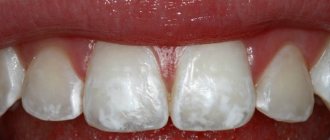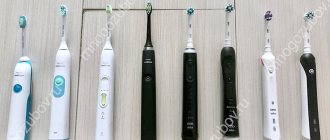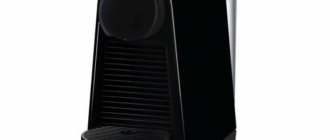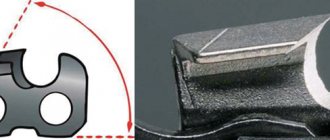Difference between regular and electric toothbrushes
Everyone knows how regular manual toothbrushes work. They clean the surface of the teeth thanks to the movements of the user's hand, which makes circular, massage and other movements. Electric models are driven by a motor located inside the device and powered by batteries or a battery.
In this article
- Difference between regular and electric toothbrushes
- Electric brushes: what are they?
- Rotary toothbrushes: simple and economical
- What is different about a sonic toothbrush?
- How is an ultrasonic brush different from a sonic toothbrush?
- Which brush is better?
Depending on the type of electric brush, the cleaning head can perform reciprocating movements, move up and down, or be completely stationary (in some ultrasonic models). Which toothbrush is best for daily oral care? It is advisable to ask your dentist this question, because for the optimal choice you need to know the condition of the teeth and gums, the presence of indications and contraindications for using an electric brush.
If there are no contraindications, then an electric toothbrush is better for many reasons:
- Due to automatic operation, it makes more cleaning movements per minute.
- Better removes dirt from interdental spaces and hard-to-reach areas.
- Good models not only remove plaque, they destroy the chains of bacteria that form it.
- According to dentists, using an electric brush increases the duration of teeth brushing and contributes to the high-quality prevention of dental and periodontal diseases.
Rotary toothbrushes: simple and economical
The rotary brush is a simple mechanical model. Like any electric brush, it is powered by a built-in motor that causes the bristles of the cleaning head to move in a reciprocating rotation or pulsating up and down mode. That is, cleaning occurs in the same way as when using a regular manual brush, with the difference that a mechanical-type rotary electric brush moves much faster than the human hand. Such models can make an average of 18 thousand movements per minute, which is not comparable to manual cleaning and provides better oral hygiene. Among the different types of electric toothbrushes, rotary toothbrushes are a good budget option that is affordable for most users. In addition to the reasonable price, a rotary mechanical brush has other advantages. It is easy to use, has a minimum of contraindications and is suitable for daily care; brushing your teeth does not require much effort. Rotary electric brushes are produced by different manufacturers. Here are some good models with a mechanical principle of operation: CS Medica CS-465-M, Braun Oral-B Vitality 3D White D12.513, B.Well MED-810.
Pros and cons of sonic and ultrasonic electric toothbrushes
The advantages of electric toothbrushes over manual ones are obvious - they are much more productive and, therefore, more effective for oral hygiene, do not injure the gums and teeth, and, as a rule, have a number of additional service functions (timer, pressure sensors, etc.). Sonic electric toothbrushes have no contraindications and are recommended even for children.
The use of ultrasonic brushes has a number of limitations caused by the effect of ultrasound on the body. First of all, it cannot be used by people who have fillings, crowns, or implants, since high-frequency vibrations can cause disturbances at the boundaries between the enamel and the filling and shorten the service life of artificial products.
Read also: Children's toothpaste without fluoride
There are suggestions that ultrasound is dangerous for women during pregnancy. Although there is no confirmed data on this, doctors still recommend refraining from using ultrasonic toothbrushes during this period. The use of ultrasonic toothbrushes is prohibited for people with a pacemaker.
What is different about a sonic toothbrush?
Dentists are often asked: sonic or electric toothbrush - which is better? It is impossible to answer this question, because sound is equal to electric. It is important to understand that a sonic brush is one of the types of electric brushes that has a combined mechanism of action on the teeth.
How does a sonic brush work?
As the name suggests, the operation of this toothbrush is based on sound vibrations. They are produced by a high-frequency generator that transmits vibrations to the cleaning head of the device. Different models can operate in the range from 12 to 40 thousand vibrations per minute. For children's models, the oscillation frequency averages 16 thousand per minute. The vibrations of the bristles created by sound waves help mix the paste with saliva and water, saturating it with small oxygen bubbles. An abundant fine-bubble foam is formed in the mouth, which removes contaminants in hard-to-reach areas of the oral cavity, has a disinfecting effect, and has a gentle effect on the enamel. The sonic electric toothbrush differs from other varieties due to its complex dual action. It removes dirt not only through a sound wave, but also through the movement of bristles. Unlike a rotary mechanical brush, a sonic brush makes more intense movements with the cleaning head, which, combined with sound vibrations, provides a very high degree of cleaning. When choosing “sonic or mechanical toothbrush”, many choose the first, more effective one.
A sonic toothbrush is better for several reasons:
- It destroys soft and pigmented plaque well.
- Prevents the formation of new plaque, preventing microbes from attaching to the enamel surface.
- Removes contaminants where the rotary model cannot penetrate.
- It has a massage effect on the gums, improves blood circulation, strengthens them, and serves as a prevention of periodontitis.
- It can be used to clean implants, crowns, and dentures.
- It's very easy to use. There is no need to make circular movements or press hard on the teeth. It is enough to touch the surface to be cleaned with minimal pressure and simply move the cleaning head from one tooth to another.
Examples of sonic toothbrushes include models such as CS Medica CS-161, Philips Sonicare Protective Clean 4500, Revyline RL 010, Panasonic EW-DL82-W820.
How to choose the right electric toothbrush: selection according to parameters and indications
If, after our description, you realized that such a hygiene device can improve your health, you must also first study all the most important parameters and take into account possible pitfalls in the form of contraindications. Let's quickly start reviewing them! Each brush has its own circle of users. Remember the indications and restrictions when choosing!
Movement (rotation) speed and various operating modes are the most important indicators
It’s not just that we immediately indicated that there are three types of electric devices for cleaning teeth and gums with different frequencies of movement of the bristles. The relevance of purchasing a particular model among the entire rating of electric toothbrushes will depend on the speed of cleaning and the presence of one or more operating modes. Consider the condition of the enamel and gums, the presence of fillings, crowns and other prostheses, as well as the health of all family members.
If you wear braces, you will temporarily have to use a regular brush.
The presence of whitening modes, massage and similar functions will save a lot of money in the future, but you make the decision about the need for certain options yourself - some people only need a minimum of hygiene options. The more modes, the whiter and healthier your smile. But the lifespan of the device, alas, is shorter.
Which electric toothbrush to choose according to the materials used and their properties
The next point worth paying attention to is the brush materials, as well as their parameters. The most important are the shape and diameter of the nozzle head, as well as the stiffness of the bristles. The ideal indicators for standard modifications in size are rounded outlines and a diameter not exceeding 1.5 cm. Any shape is suitable for sound and ultrasonic products, since sound waves reach any part of the oral cavity.
Ideally, the bristles should form a concave shape - this will ensure maximum access to the enamel and gums. In terms of rigidity, you can notice the following options:
| Rigidity | Who is it suitable for? |
| Soft bristles | Suitable for sensitive and weakened dentin; electronic toothbrushes for children are also equipped with similar bristles |
| Medium hard | A one-stop solution for unweakened enamel |
| High rigidity | Prescribed only in special cases, not always available |
The material used in more than 90% of cases is plastic. In individual copies you can find natural bristles, but this choice is recommended only for allergy sufferers.
Battery type and availability of additional functions - useful delights
Ease of use depends on the time of continuous operation. Therefore, you should not ignore what energy source is installed in the product. Cheap models, as a rule, run on regular batteries, which negatively affects subsequent costs. Higher quality copies are equipped with a battery, which has a positive effect on both service life and autonomy.
Please note that batteries must be removed from the case periodically because they tend to oxidize.
The presence in the brush of a timer to control the time of the procedure, a pressure sensor, indication of wear of the replaceable attachment and other bells and whistles is purely auxiliary - you should not pay too much attention to this.
“Smart” toothbrushes are just appearing on our market and are still quite expensive
What kind of electric toothbrush should be for children?
The children's electric toothbrush stands apart - this equipment is intended for younger family members aged 7 years and older. Unlike the “adult” configuration, this device has the following distinctive features:
- bright appearance that allows you to captivate the child with the cleaning process;
- low speed of motor operation, which does not allow damage to the oral cavity;
- the presence of a signal in the form of a cheerful melody, notifying the end of the procedure.
The main advantage of buying an electric device for cleaning teeth and gums will be the opportunity to turn a boring and routine activity into an unusual game, thereby instilling in your child an interest in proper hygiene from a young age.
With such a “toy” the child will not perceive the procedure as something scary and unpleasant
How is an ultrasonic brush different from a sonic toothbrush?
Many people are sure that a sonic brush and an ultrasonic brush are the same thing. But these devices have different designs and operating principles. What are the differences?
If the former create sound vibrations in the audible range, then the latter produce high-frequency vibrational waves - ultrasound, which is inaccessible to the human ear. These vibrations are transmitted to the bristles of the cleaning head, causing them to vibrate at a high frequency (an average of 2,400 million vibrations per minute). Ultrasound destroys plaque formed on teeth, prevents new plaque from attaching to the enamel surface, and penetrates into gum pockets, interdental spaces and other hard-to-reach areas. Ultrasonic models have a therapeutic effect on teeth, gums and the entire oral cavity, due to the fact that ultrasound penetrates 4-12 mm deep (depending on which part of the device the piezoelectric element is located). During cleaning, the tissues are slightly heated, and the increase in temperature promotes the accelerated release of calcium and fluoride ions from the paste and accelerates blood supply to the gums. This helps strengthen the gums and enamel. Some ultrasonic electric brushes operate solely through ultrasound and do not move the cleaning head. For example, this is how Emmi-dent brand models are designed. Electric brushes from other manufacturers combine ultrasonic action with cleaning movements of the head. An example is ultrasonic brushes from Donfeel and Megasonex.
The difference between sonic and ultrasonic brushes
The operation of sonic and ultrasonic brushes is based on the same processes. The difference lies in the frequency and number of vibrations. In this regard, the ultrasonic brush is more powerful: this is achieved thanks to the built-in piezocrystal. The therapeutic ultrasound frequency is 1.6-1.8 MHz, that is, more than 100 million vibrations per minute. Ultrasonic vibrations provide a number of benefits.
- Excellent quality hygiene indicators. Ultrasound breaks down bacterial chains and works best on loose and mineralized plaque
- Ultrasound has an antibacterial effect
- Ultrasound penetrates several millimeters deep into the tissue and helps the active elements of the toothpaste to be absorbed
Read also: Which is better tooth powder or toothpaste?
However, ultrasonic brushes have a number of disadvantages. Firstly, the vibrations of their bristles do not have sufficient amplitude to create a dynamic flow (as a sonic brush does). This problem is solved by a combined system, when the device has generators to create sound and ultrasonic frequencies.
Secondly, an ultrasonic brush is contraindicated for implantation, the presence of many fillings, periodontal inflammation, as well as erosion and enamel diseases. Ultrasound significantly reduces the service life of crowns and veneers and is not suitable for people with a pacemaker.
Which brush is better?
Knowing the characteristics and operating principle of different types of electric toothbrushes, it is easier to make a choice. But it’s impossible to say for sure which is better, because each type has its own pros and cons.
When choosing, you need to take into account the purpose of use, what problems exist with teeth or gums, whether there are crowns, implants, veneers, braces or other dental structures in the mouth. For example, for beginners and those on a budget, a high-quality rotary model would be a good choice. It cleans better than manual cleaning, but not as intensely as sonic or ultrasonic cleaning. It’s easier to get used to, and in the future you can switch to a different type of model. Sonic electric brushes have a minimum of contraindications; they clean teeth much more effectively than usual, prevent the formation of plaque, clean interdental spaces and gum pockets, have a strengthening effect on the gums and are suitable for cleaning crowns and dentures. Ultrasonic models provide highly effective cleaning of teeth and oral cavity, destroy chains of bacteria, eliminate microbes even from difficult areas, and have a therapeutic effect on soft tissues. But they are not recommended for cleaning braces, crowns, implants, or for people with areas of demineralized enamel. A dentist will help you choose the right brush that will optimally solve the problems of caring for your teeth and gums.











